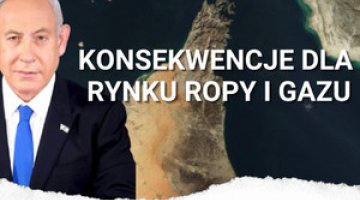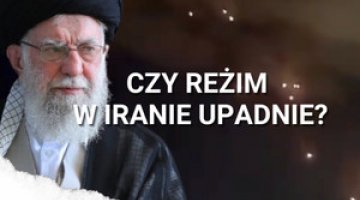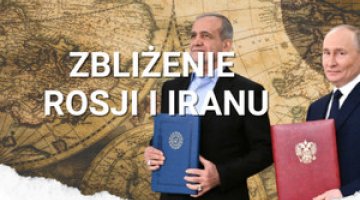The successful offensive of the Syrian opposition forces: an opportunity for Turkey and a challenge for Russia
Since 27 November, opposition forces in Syria have been continuing their offensive, successfully pushing out government troops from Aleppo and Kurdish forces from Tall Rifaat. As a result, several Iranian and Russian outposts have been evacuated. After nearly a week of fighting, the initiative remains with the opposition forces. The Assad regime has received Russian air support and reinforcements from pro-Iranian militias originating from Iraq. In recent days, Syrian President Bashar al-Assad reportedly visited Moscow, while the leaders of Russia and Iran engaged in telephone discussions, as did the foreign ministers of these countries and Turkey. Additionally, Iran’s foreign minister visited Damascus and Ankara. The situation is expected to be addressed at an extraordinary meeting of the foreign ministers of Turkey, Russia, and Iran, which is set to convene at the earliest opportunity under the framework of the Astana Process.
The main opposition forces are Hayat Tahrir al-Sham (HTS) – a radical Islamist group originating from al-Qaeda – and the Syrian National Army (SNA), which emerged from the secular opposition. These groups primarily controlled the Idlib province, and this part of Syria has been able to maintain its semi-autonomous status mainly owing to Turkish support and protection.
This offensive marks the end of the relatively fragile stability in the Syrian conflict that had prevailed since 2019, favouring the government and its allies, Iran and Russia. In the short term, it bolsters Ankara by diminishing Kurdish control. However, the extent to which it alters the balance of power among Turkey, Moscow, and Tehran in Syria remains uncertain.
Commentary
- The relative success of the opposition offensive marks a significant shift in the balance of power in the Syrian conflict and signals a new phase. This occurred in part because Iran and Hezbollah had reduced their support for Assad’s forces, primarily due to their ongoing clashes with Israel. These reinforcements had been instrumental in securing the regime’s previous gains. Additionally, Russia’s support, limited mainly to airstrikes and lacking an effective ground component, has proven insufficient. The government forces are thus unlikely to regain the initiative for the time being.
- The current situation is favourable for Ankara, which has supported the Syrian opposition for over a decade, though it has never fully controlled HTS. In the short term, Turkey’s actions have been driven by the need to prevent a potential wave of refugees from Idlib and its hopes for the repatriation of Syrian refugees currently residing in Turkey. At present, part of the opposition’s efforts, led primarily by the SNA, is directed against the Syrian Democratic Forces (SDF), a Kurdish-dominated group that Turkey associates with the Kurdistan Workers’ Party (PKK), which it considers a terrorist organisation. Meanwhile, HTS maintains a stance of benevolent neutrality toward the Kurds. If opposition forces succeed at weakening or, ideally, dismantling the SDF, Turkey is likely to achieve its primary goal in Syria: the elimination of the PKK. Additionally, Ankara sees an opportunity to bolster its regional influence and, indirectly, its position in relations with the US and the EU.
- The successes of opposition forces pose a challenge for Russia, which has consistently supported the Assad regime. Russia maintains two key military bases in Syria: a naval base in Tartus and an air base in Khmeimim, alongside access to Syrian army bases and outposts, with approximately 4,000 Russian troops and naval personnel stationed in the country. The armed anti-Assad opposition’s gains have clearly surprised Moscow, forcing it to evacuate some of its troops deployed in conflict zones. Russian forces remain sufficient to sustain operations at current levels without diminishing their presence in Ukraine. However, the prospects for resupply by sea have deteriorated since Turkey closed the Black Sea straits to military vessels. Consequently, the Russian Black Sea Fleet’s ability to supply its contingent and Assad’s forces has been restricted, compounding challenges in Syria. Regardless of its strategy, Russia’s primary objectives in Syria remain the stabilisation of the Assad regime and the maintenance of its existing military bases.
- This is likely to result in a shift in the balance of power in Syria, particularly among Russia, Iran, and Turkey. Until now, Russia and Iran have maintained dominant positions, while matters involving Turkey have been managed through trilateral negotiations within the Astana Process framework, based on the prevailing military situation. To sustain this arrangement, Russia (currently lacking sufficient air support) and Iran (with inadequate reinforcements from pro-Iranian militias) would need to substantially increase their involvement. If speculation about US-backed support for Damascus from states like the UAE in exchange for severing ties with Tehran proves accurate, Russia and Iran may face further complications. Despite a relative increase in Turkey’s influence, it lacks the capacity to assume a leading role in Syria and marginalise its rivals. Political negotiations appear to be the most viable path for establishing a new balance, avoiding direct confrontation, and securing fundamental interests of Russia, Iran, and Turkey– particularly in limiting US flexibility in the region. The sustainability and effectiveness of such an agreement will ultimately depend on the evolving situation within Syria.




